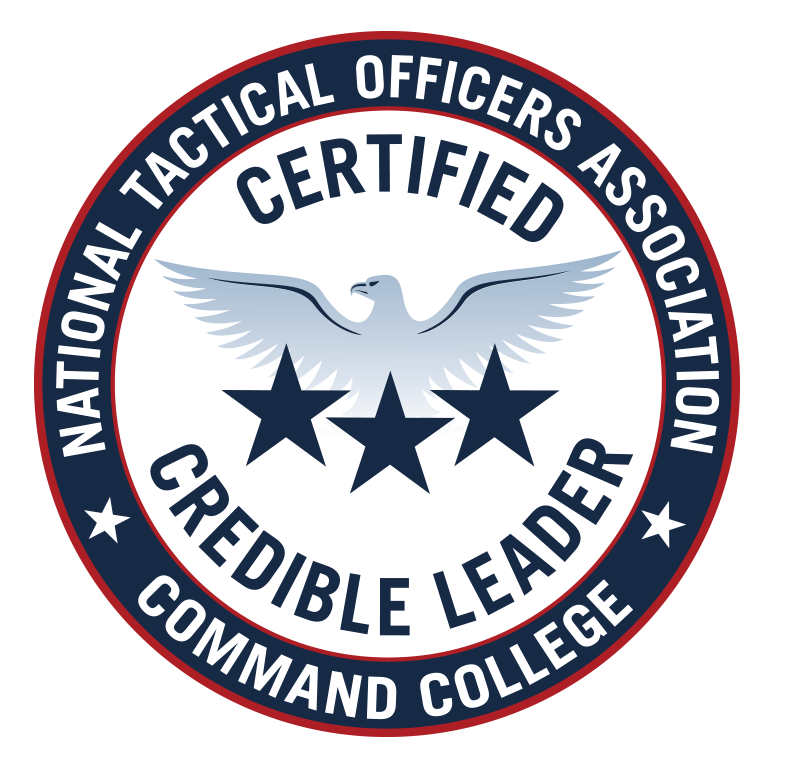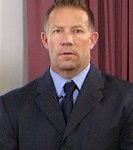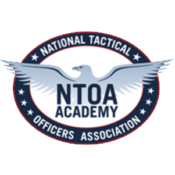Introduction by Captain Kevan Dugan

Overview
This blended (on-line & residency) course is a follow-on to the SWAT Command Decision-Making and Leadership I course. A comprehensive array of topics will be discussed including improving the structure and delivery of training, maximizing training hours, methods to incorporate SWAT into large scale operations, problem-solving methods and analytical thinking, organizational leadership, trust, and much more. Overall discussions will aid students in their role as leaders within their units and agencies. This class includes intensive academic and theoretical components. Students will conduct research, participate in analytical discussions, and produce written documents to enhance team preparedness.
Learning Objectives
Upon successful completion of this course, the student should be able to:
- Develop a protocol to follow after officer involved shootings to ensure command responsibilities are addressed.
- Show an understanding and proper application of problem-solving techniques and analytical thinking for operational and non-operational problems.
- Deconstruct team, squad, and individual skills to formulate a focused block of training and establishing automaticity and shared mental models within the team.
- Identify and distinguish between basic aspects of several modern leadership theories and models and apply them to foster effective leadership, ethical decision-making, and motivation within the team.
- Utilize a given framework to develop a working model to facilitate effective testimony to defend team actions and command decisions.
- Identify critical mission areas and logistical concerns of a large operation and utilize a given framework to staff the SWAT missions and address contingencies.
- Identify various potential missions that would benefit from a multi-jurisdictional response.
- Identify regional assets to apply to the missions.
- Create SOP response framework, and joint training plans to achieve the mission objectives.
- Understand the relationship between tactics and tempo, and utilize analysis of the incident to shape your operational environment.
Strategic Planning by Col. Randy Watt
Problem Solving by by Col. Randy Watt
-
Review the bios of your instructors.
-
Read your textbook as you go through the lectures.
-
Download slides for each section as reference material.
-
Review all lectures in all sections of the course and complete all associated discussion boards and assignments.
-
Write your essay and upload it to the Academy as instructed.
-
Take your comprehensive quiz.
 Instructor: Wayne DuBois has been a police officer for 18 years and currently supervises a Street Crimes Unit. He has served with the Tri-City Regional SWAT team since 1998, and has been a Team Leader for the past 9 years. Wayne serves as President of the Washington State Tactical Officers Association, and is the Lead Instructor for the WSTOA Training Cadre. He has instructed with the WSTOA for over 10 years and has been responsible for training over 1000 officers in Basic and Advanced SWAT tactics. Wayne holds a BS in Government and Religion from Liberty University.
Instructor: Wayne DuBois has been a police officer for 18 years and currently supervises a Street Crimes Unit. He has served with the Tri-City Regional SWAT team since 1998, and has been a Team Leader for the past 9 years. Wayne serves as President of the Washington State Tactical Officers Association, and is the Lead Instructor for the WSTOA Training Cadre. He has instructed with the WSTOA for over 10 years and has been responsible for training over 1000 officers in Basic and Advanced SWAT tactics. Wayne holds a BS in Government and Religion from Liberty University.
 Instructor: Kevan Dugan served 29 years with the Pennsylvania State Police assigned to Patrol, Criminal Investigations, Undercover Unit, Underwater Search Team and the Special Emergency Response Team. He served 17 years with the Special Emergency Response Team, serving as an operator, team leader, coordinator, and lastly as a Division Director responsible for both East and West SERTs, and the Canine and Hazardous Device and Explosive Units. He is a member of the NTOA, PATOA and CATO and was the recipient of a Lifetime Achievement Award from the PATOA (Pennsylvania Tactical Officers Association) after his retirement. He is a graduate of the FBINAA, Session 213 and is a certified Force Science Analyst. He currently serves as a Western Region Director for the NTOA.
Instructor: Kevan Dugan served 29 years with the Pennsylvania State Police assigned to Patrol, Criminal Investigations, Undercover Unit, Underwater Search Team and the Special Emergency Response Team. He served 17 years with the Special Emergency Response Team, serving as an operator, team leader, coordinator, and lastly as a Division Director responsible for both East and West SERTs, and the Canine and Hazardous Device and Explosive Units. He is a member of the NTOA, PATOA and CATO and was the recipient of a Lifetime Achievement Award from the PATOA (Pennsylvania Tactical Officers Association) after his retirement. He is a graduate of the FBINAA, Session 213 and is a certified Force Science Analyst. He currently serves as a Western Region Director for the NTOA.
 Instructor: Jeff Selleg has worked in Law Enforcement for 19 years and served as a member of Valley Regional SWAT from October of 2000 to July 2013. He served in the capacity of entry team member, sniper, sniper team leader, and entry team leaders. He holds professional certifications as a HazMat technician and Explosive Breacher along with being a certified instructor in many of the disciplines associated with tactical operations. During this time he has responded to numerous emergency calls and planned operations. He held the rank of Sergeant at the Port of Seattle Police Department from 2005 to April 2013 when he was promoted to Commander, and currently Commands a patrol division at Seattle Tacoma International Airport as well as the Explosive Detection Canine Unit. Jeff has been a member of the Washington State Tactical Officer’s Association Board of Directorssince 2007 and currently serves as the Vice President. He has instructed hundreds of officers in his role as a Basic and Advanced SWAT instructor as well as the Valley SWAT regional Active Shooter Program. Jeff current serves as an advisor to theNational Institute of Justice – Tactical Technology Working group for theDepartment of Justice as well as a committee member to the National Tactical Officer Association’s – National SWAT Standards Review Committee. Since 2012 Jeff has taught as an instructor for the National Tactical Officer Association teaching the Team Leader Development Course. Jeff holds a Bachelor of Science degree in Accounting from Saint Martin’s University in Lacey Washington and a Master’s of Arts degree in Organizational Leadership from Chapman University in Orange California.
Instructor: Jeff Selleg has worked in Law Enforcement for 19 years and served as a member of Valley Regional SWAT from October of 2000 to July 2013. He served in the capacity of entry team member, sniper, sniper team leader, and entry team leaders. He holds professional certifications as a HazMat technician and Explosive Breacher along with being a certified instructor in many of the disciplines associated with tactical operations. During this time he has responded to numerous emergency calls and planned operations. He held the rank of Sergeant at the Port of Seattle Police Department from 2005 to April 2013 when he was promoted to Commander, and currently Commands a patrol division at Seattle Tacoma International Airport as well as the Explosive Detection Canine Unit. Jeff has been a member of the Washington State Tactical Officer’s Association Board of Directorssince 2007 and currently serves as the Vice President. He has instructed hundreds of officers in his role as a Basic and Advanced SWAT instructor as well as the Valley SWAT regional Active Shooter Program. Jeff current serves as an advisor to theNational Institute of Justice – Tactical Technology Working group for theDepartment of Justice as well as a committee member to the National Tactical Officer Association’s – National SWAT Standards Review Committee. Since 2012 Jeff has taught as an instructor for the National Tactical Officer Association teaching the Team Leader Development Course. Jeff holds a Bachelor of Science degree in Accounting from Saint Martin’s University in Lacey Washington and a Master’s of Arts degree in Organizational Leadership from Chapman University in Orange California.
 Instructor: Luke Sherman is a 23-year veteran of the Tulsa Police Department (Tulsa, OK). He holds a bachelors degree of science in Criminal Justice from Northeastern State University in Oklahoma. He promoted to the rank of sergeant in 1999 and has supervised numerous different patrol squads as well as vice, task force groups and detective division units. Sgt. Sherman currently supervises both the police department’s Fugitive Warrants Unit as well as the U.S. Marshal task force group responsible for the Northern District of the State of Oklahoma. During over a decade of service as a member of Tulsa’s Special Operations Team (SOT), Sgt. Sherman served as a tactical operator, assistant team leader and also assistant team commander. He has been involved in hundreds of warrants, high-risk warrants, tactical deployments, high-profile investigations during this time. His duties and experience include high-risk warrant services, barricaded incidents, hostage incidents, dignitary protection and tactical training and instruction for SOT, the police department and other surrounding agencies. Sgt. Sherman has been involved with tactical instruction for the past 16 years and is currently in his 11th year as an instructor for NTOA teaching Basic/Advanced SWAT, Hostage Rescue, Barricaded Gunman, Chemical Agents, Less-Lethal munitions, Flash Sound Diversionary Devices, Team Leadership, Commander Development and Advanced Tactics. He has instructed on the state, national and international level involving the aforementioned tactics and philosophies with over 4600 hours (115+ classes or conferences) for the NTOA. Sgt. Sherman has been a member of the Board of Directors since 2008 and has played a significant part in the continuation of forward change and implementation the association has undergone in the past decade.
Instructor: Luke Sherman is a 23-year veteran of the Tulsa Police Department (Tulsa, OK). He holds a bachelors degree of science in Criminal Justice from Northeastern State University in Oklahoma. He promoted to the rank of sergeant in 1999 and has supervised numerous different patrol squads as well as vice, task force groups and detective division units. Sgt. Sherman currently supervises both the police department’s Fugitive Warrants Unit as well as the U.S. Marshal task force group responsible for the Northern District of the State of Oklahoma. During over a decade of service as a member of Tulsa’s Special Operations Team (SOT), Sgt. Sherman served as a tactical operator, assistant team leader and also assistant team commander. He has been involved in hundreds of warrants, high-risk warrants, tactical deployments, high-profile investigations during this time. His duties and experience include high-risk warrant services, barricaded incidents, hostage incidents, dignitary protection and tactical training and instruction for SOT, the police department and other surrounding agencies. Sgt. Sherman has been involved with tactical instruction for the past 16 years and is currently in his 11th year as an instructor for NTOA teaching Basic/Advanced SWAT, Hostage Rescue, Barricaded Gunman, Chemical Agents, Less-Lethal munitions, Flash Sound Diversionary Devices, Team Leadership, Commander Development and Advanced Tactics. He has instructed on the state, national and international level involving the aforementioned tactics and philosophies with over 4600 hours (115+ classes or conferences) for the NTOA. Sgt. Sherman has been a member of the Board of Directors since 2008 and has played a significant part in the continuation of forward change and implementation the association has undergone in the past decade.
 Instructor: William (Bill) Young is currently employed at the NASA Kennedy Space Center by Chenega Security and Support Solutions, and serves as the Assistant Chief of Security Operations and Commander of the Emergency Response Team. He retired from the Pennsylvania State Police after serving for 25 years with that agency and had been assigned to supervise various units during his career, including patrol, criminal investigations and special operations. Bill spent 19 years as a member and commander of the Pennsylvania State Police Special Emergency Response Team (SERT) and retired in 2013 as the commanding officer of Troop “A”, at the rank of Captain. He served as vice president of the Pennsylvania Tactical Officers Association (PATOA) from 2009 to 2015, and as the Tactical Command Section Chair for the NTOA from 2012-2016. He is a graduate of the 245th Session of the FBI National Academy and holds a master’s degree in Organizational Leadership from Geneva College.
Instructor: William (Bill) Young is currently employed at the NASA Kennedy Space Center by Chenega Security and Support Solutions, and serves as the Assistant Chief of Security Operations and Commander of the Emergency Response Team. He retired from the Pennsylvania State Police after serving for 25 years with that agency and had been assigned to supervise various units during his career, including patrol, criminal investigations and special operations. Bill spent 19 years as a member and commander of the Pennsylvania State Police Special Emergency Response Team (SERT) and retired in 2013 as the commanding officer of Troop “A”, at the rank of Captain. He served as vice president of the Pennsylvania Tactical Officers Association (PATOA) from 2009 to 2015, and as the Tactical Command Section Chair for the NTOA from 2012-2016. He is a graduate of the 245th Session of the FBI National Academy and holds a master’s degree in Organizational Leadership from Geneva College.
Teams & Trust
- Download Slides: Teams & Trust
- Run Training: This training module includes extensive video lectures.
Problem Solving, Analytical Thinking & Decision-Making
- Download Slides: Problem Solving, Analytical Thinking & Decision-Making
- Download Articles & Read:
- Run Training: This training module includes extensive video lectures.
Multi-Agency SWAT Collaboration
- Download NTOA Standard: NTOA’s Tactical Response and Operations Standard
- Download Slides: Multi-Agency SWAT Collaboration
- Download Articles & Read:
- Run Training: This training module includes extensive video lectures.
Integrating SWAT into Large Scale Planned Operations
- Download Slides: Integrating SWAT into Large-Scale Planned Operations
- Run Training: This training module includes extensive video lectures.
Maximizing Training
- Download Slides: Maximizing Training
- Run Training: This training module includes extensive video lectures.
Officer Involved Shooting
- Download Slides: Officer Involved Shooting
Based on the material that you have reviewed in this course, write a one-page paper in APA format, answering this question:
What are some of the key points to remember when planning the SWAT component of a larger operation?
Please follow these instructions for completing your paper and uploading it to the portal:
Follow the APA writing guidelines.
Name your essay before uploading it: YourLastName_Command2_Essay
Save your file on your computer in .pdf or .doc format and then upload below.
[gravityform id=”14″ title=”true” description=”true”][php_everywhere]

